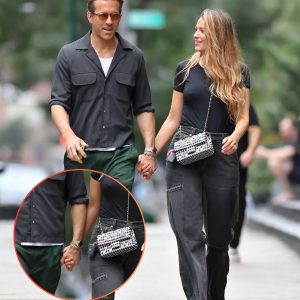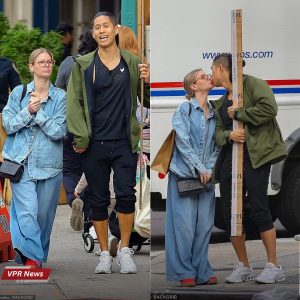The Beauty of Ambiguity in Billy Joel’s “My Life”
Billy Joel’s 1984 song “My Life” has endured as one of his most popular hits due in large part to its ability to resonate with listeners on a deeply personal level. Beyond its infectious melody and upbeat piano riff, the lyrics of “My Life” invite diverse interpretations that allow the song to mean something unique to each listener. This ambiguity is no accident – it was a deliberate choice by Joel to craft a song that could speak to the shared human experiences of struggle, hope, and finding purpose. At its core, “My Life” is about embracing life’s complexity without easy answers. It leaves space for listeners to find their own truths within its poetry.

On the surface, “My Life” presents as an anthemic celebration of perseverance and choosing optimism despite challenges. The opening verse declares “Life can be only what you make it” emphasizing personal agency and choice in how one approaches adversity. However, a closer examination of the lyrics reveals nuanced layers that don’t provide pat resolutions. The repeated line “If you looked at my life and see what I see” hints that our outward perceptions can differ drastically from internal realities. While the music conjures images of “sunshine,” the bracketed lyrics “so blue” and “down and out” suggest private struggles beneath the surface.

This dichotomy between outward appearances and inner experiences is a profound truth that most can relate to. We all navigate hardships, doubts, and darkness that others may not see. By acknowledging this duality so early in the song, Joel establishes “My Life” as a contemplation of life’s deeper complexities rather than a simplistic pep talk. The ambiguity allows listeners to see themselves within these lyrics, relating to either perspective or both. It validates that there are always multiple truths dependent on one’s vantage point.
The verses continue exploring contrasting approaches to hardship through the lines “Life can be only what you make it” and “Except for the man up above.” On one hand, this emphasizes personal agency and strength – we have power to choose our attitudes and paths. But the very next line introduces an alternative perspective of finding solace through faith. It presents faith and self-determination not as opposing forces but complementary ways of coping. Again, Joel resists taking a definitive stance, leaving space for listeners to relate to one, both or neither approaches as resonate most with their own philosophies and experiences.

This ambiguity creates an inclusive message that can mean something nuanced to virtually any listener regardless of beliefs. For some, the lyrics may reinforce their faith-based outlooks. Others may find catharsis in the affirmation of personal agency. More agnostic listeners could interpret the lines as acknowledging that different methods work for different people. By avoiding proclaiming one perspective as superior, Joel crafts a song with potential for diverse yet meaningful interpretations.

The most powerful moment arrives in the pre-chorus with the line “I know we all are struggling.” Here, Joel validates life’s shared difficulties and the universality of hardship in a way that reminds us we are not alone in our struggles. Who among us has not faced challenges of some kind? In just a few words, he acknowledges our common humanity beneath surface differences. For listeners feeling isolated or that no one understands their burdens, this simple statement can be profoundly comforting. It transforms “My Life” from a personal story into an anthem of our collective experiences.

The chorus then reiterates the song’s overarching theme of ambiguity by asking listeners to consider how one’s inner and outer perspectives can vary: “If you looked at my life and see what I see, I know that you would find the same things that you see are the same things that you find.” Joel masterfully employs repetition here to drill into the idea that reality is multilayered. Our perceptions are inherently limited by our individual vantage points. The ambiguity leaves interpretation open as to whether the “same things” refer to shared struggles or the impossibility of ever seeing through another’s eyes. Like the rest of the lyrics, the chorus resists definitive conclusions.
Throughout “My Life,” Joel’s brilliant use of ambiguity allows for multiplicity rather than singularity of meaning. Listeners are free to derive personal significance from the poetry based on their own life experiences. For some, it may be an anthem of perseverance. Others may find catharsis in its acknowledgment of universal struggles. More spiritual listeners could interpret its message as one of maintaining hope through faith. There are no right or wrong ways to relate to these lyrics because Joel purposefully crafted them to resonate on many levels.
This approach makes “My Life” a uniquely inclusive song that can mean something profound yet personal to virtually any listener. It doesn’t preach or dictate – it simply presents poetic reflections on life’s complexity and invites us to see ourselves within its words. Even after nearly four decades, the song retains resonance because its ambiguity leaves interpretations open rather than closed. We don’t outgrow the lessons of persevering through challenges, maintaining optimism despite hard times, or finding solace in whatever philosophies help us cope.
In the final analysis, the true beauty of “My Life” lies not in any single interpretation but its potential for multiplicity. By avoiding reductive conclusions and instead acknowledging life’s diverse truths and perspectives, Joel crafted lyrics that continue speaking to new generations in aging yet timeless ways. Its message of embracing complexity without easy answers has enduring relevance because it mirrors the experience of being human. In “My Life,” Joel presents poetry that illuminates our shared struggles and hopes, but leaves the precise meanings open as vast and diverse as our individual lives. That is perhaps the greatest gift an artist can offer – the freedom to find ourselves in their work on our own terms.





